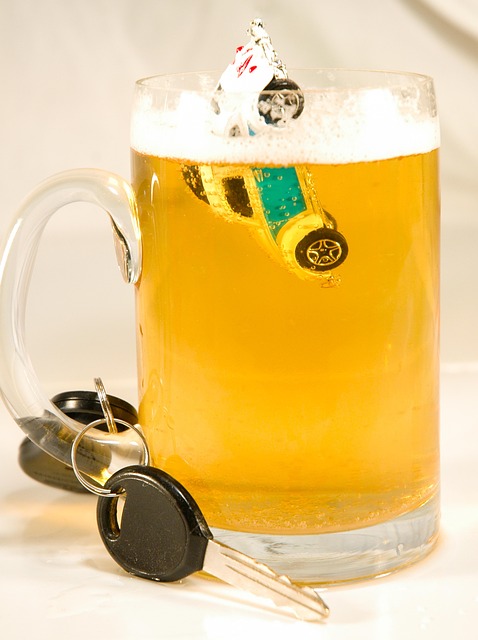Walking, cycling, and ride-sharing apps gain popularity as eco-friendly transit alternatives, offering safety benefits and reduced environmental impact. Social media campaigns raise awareness, while stringent DUI laws target impaired driving. Digital age transformations enhance public safety through real-time reporting of unsafe behaviors on social media, with evolving legal frameworks adapting to include digital evidence in DUI cases.
“As cities worldwide grapple with traffic congestion and safety concerns, exploring alternative transit options is crucial. This article delves into innovative solutions for a safer transportation future. We examine non-motorized transport like walking and cycling, their benefits, and how to enhance their safety. Additionally, we explore the role of ride-sharing apps in reducing DUI risks and delve into the social media and legal aspects of DUI prevention as key social safety measures.”
- Exploring Non-Motorized Transport Options: Walking, Cycling Safety
- The Role of Ride-Sharing Apps: Reducing DUI Risks
- Legal Frameworks: Social Media, DUI, and Public Safety Measures
Exploring Non-Motorized Transport Options: Walking, Cycling Safety

Walking and cycling are gaining popularity as alternative transit options, offering numerous benefits for individuals and the environment. When it comes to safety, both modes have their advantages. For instance, pedestrians and cyclists often have a better understanding of their surroundings, allowing them to navigate through areas with ease and spot potential hazards early on. This heightened awareness can significantly reduce the risk of accidents.
Moreover, non-motorized transport promotes a healthier lifestyle, reduces carbon emissions, and minimizes traffic congestion. However, it’s essential to prioritize safety measures like wearing reflective gear, using lights during low-visibility conditions, and adhering to local traffic rules. With the rise of social media and its influence on public perception, sharing success stories and awareness campaigns related to walking and cycling can encourage more people to adopt these sustainable transit options while understanding their legal rights, especially in relation to DUI laws, which vary across regions but generally discourage and penalize driving under the influence.
The Role of Ride-Sharing Apps: Reducing DUI Risks

The rise of ride-sharing apps has significantly transformed the way people travel, offering a convenient and often cost-effective alternative to traditional taxis or personal vehicles. These applications play a pivotal role in mitigating DUI (Drunk Driving under Influence) risks by providing a safe and reliable method for individuals who have been consuming alcohol to get home. By simply tapping on their smartphones, users can request a ride from one of the app’s network of drivers, ensuring a designated driver for the evening.
This modern solution addresses the pervasive issue of impaired driving, which often garners substantial attention through social media campaigns and legal initiatives. The legal aspects surrounding DUI are stringent, with severe penalties and long-lasting consequences. Ride-sharing apps tap into this awareness by promoting responsible drinking habits and offering a practical way to avoid the dangers of operating a vehicle while intoxicated. Thus, these platforms not only contribute to road safety but also engage in the broader social discourse on alcohol consumption and its legal implications.
Legal Frameworks: Social Media, DUI, and Public Safety Measures

The digital age has brought about significant shifts in how we perceive and interact with public safety measures, particularly in the realm of alternative transit options. Social media plays a crucial role in this transformation, as it allows for instant reporting of unsafe driving behaviors and potential DUI (Driving Under the Influence) incidents. This real-time data can serve as a powerful tool for law enforcement agencies to enhance their patrols and ensure public safety. The legal frameworks surrounding social media evidence and DUI cases are evolving to keep pace with these changes.
DUI legal aspects, for instance, now consider digital evidence from social media platforms alongside traditional sources like blood tests and field sobriety assessments. This shift is necessary to address the growing prevalence of drunk driving-related posts and messages on social media. As a result, law enforcement can more effectively navigate this modern landscape, utilizing public posts and tips from social media as supplementary proof in DUI investigations. Such adaptations in legal considerations highlight the intricate relationship between technology, public safety, and legislation.
In exploring alternative transit safe options, we’ve seen the potential for non-motorized transport like walking and cycling, as well as the role of ride-sharing apps in reducing DUI risks. Moreover, understanding the social media and DUI legal aspects through robust frameworks ensures public safety measures are effectively implemented. Ultimately, by combining these strategies, we can foster a safer, more sustainable transportation ecosystem.






